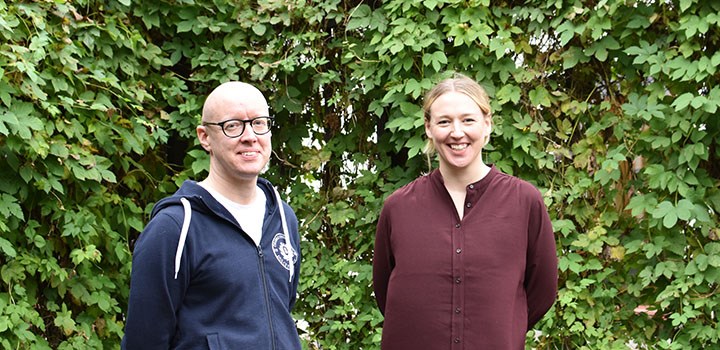How to avoid publishing in predatory journals

Claes Karlsson and Anna Westerlund.
When publishing research results, there is unfortunately a large number of dubious publishers that attempt to attract papers through false information and deceptive practices. Here are some tips to help you to avoid falling into the trap of a predatory publisher.
The University Library’s research support can help with evaluating journals. As a first step, use a checklist that may help you to determine whether a journal is legitimate.
Anna Westerlund and Claes Karlsson are involved in the Library’s research support. Anna’s advice is to always perform a thorough check of the journal and publisher prior to engaging in any further contact:
- Start by using the checklist to form your own opinion on the journal. We are happy to assist with further evaluation if it is difficult to make up your mind, says Anna Westerlund.
In practice, these journals are in the business of fraudulent rather than scholarly publishing. By referring to well-known sources, or displaying an impact factor on their websites, they seek to make a false impression.
- There are many ways to deceive. Being sceptical is a good rule of thumb. Just imagine how easy it is to set up a website, copy some logos and text from a legitimate site, and then start accepting submissions and charging for the publication of articles – while claiming that these articles have been peer-reviewed when they were not, says Claes Karlsson.
These predatory journal websites can vary in appearance.
- Some sites may appear unprofessional, while larger “publishers” with hundreds of predatory journals may appear legitimate at first sight, says Claes Karlsson.
It is very important not to take for granted that the information presented is correct.
- Is it stated that the journal is indexed in Web of Science or the Directory of Open Access Journals? Go to the source to verify. Be thorough. And make sure that the indexing services that the journal refers to are actually valid in terms of assessing the quality of the journal. There is a myriad of alternative ‘impact factors’ and dubious indexes that can appear on the sites of these journals. In some cases a fake journal mirrors the title and ISSN of a legitimate journal, and a simple Google search may well lead you to the fake journal website, Claes Karlsson continues.
The Directory of Open Access Journals (DOAJ) is a good starting point to check if a journal is legitimate. All journals indexed in DOAJ have been reviewed. That may be compared to for instance Google Scholar, where the indexed journals and articles are not subject to quality control.
What are the consequences if you still accidently publish in a predatory journal? From time to time, the Library receives inquiries about the journals in which candidates for promotion or doctoral students have published.
- As an example, Anna Westerlund says, there have unfortunately been cases where doctoral students were not allowed to include certain articles in their dissertations, because those articles had been published in predatory journals. A difficult situation may also arise if an article has already been submitted to a predatory journal when the author realises that a mistake has been made. The journal may then offer to remove the article – but for a fee. As a researcher, you can get caught in a kind of hostage situation.
Publishing in a predatory journal is also a violation of the European Code of Conduct for Research Integrity. Another risk is that your article can simply disappear from the internet if the website is shut down. Legitimate publishers typically have agreements with third-party vendors to ensure the long-term preservation of its published articles, in the eventuality of the publisher going bankrupt, for instance.
While predatory journals remain a serious problem in scholarly publishing, there are promising signs:
- To conclude on a positive note, we have the impression that researchers are more aware of the problem today than a few years ago, says Claes Karlsson.
- I agree, we are continuously receiving questions regarding potential predatory publishers, and the sooner we are contacted the better, Anna Westerlund concludes.
